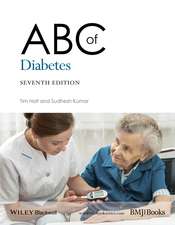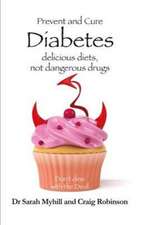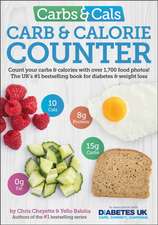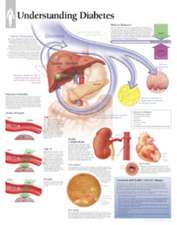Drugs, Athletes, and Physical Performance
Editat de John A. Thomasen Limba Engleză Paperback – 8 mar 2012
Preț: 717.00 lei
Preț vechi: 754.74 lei
-5% Nou
Puncte Express: 1076
Preț estimativ în valută:
137.21€ • 148.99$ • 115.26£
137.21€ • 148.99$ • 115.26£
Carte tipărită la comandă
Livrare economică 22 aprilie-06 mai
Preluare comenzi: 021 569.72.76
Specificații
ISBN-13: 9781468455014
ISBN-10: 146845501X
Pagini: 256
Ilustrații: 254 p.
Dimensiuni: 178 x 254 x 20 mm
Greutate: 0.45 kg
Ediția:Softcover reprint of the original 1st ed. 1988
Editura: Springer Us
Colecția Springer
Locul publicării:New York, NY, United States
ISBN-10: 146845501X
Pagini: 256
Ilustrații: 254 p.
Dimensiuni: 178 x 254 x 20 mm
Greutate: 0.45 kg
Ediția:Softcover reprint of the original 1st ed. 1988
Editura: Springer Us
Colecția Springer
Locul publicării:New York, NY, United States
Public țintă
ResearchCuprins
1. Vitamins and Athletes.- 1. Physiological Function.- 2. Metabolism, Exercise, and Vitamins.- 3. Vitamin Supplementation and Enhanced Athletic Performance.- 4. Toxicity of Hypervitaminosis.- 5. Conclusion.- References.- 2. Fate of Anabolic Steroids in the Body.- 1. Introduction.- 2. Physiology of Androgenic Hormones.- 3. Synthetic Anabolic Steroids.- 4. Conclusions.- References.- 3. Nutrition, Fluid Balance, and Physical Performance.- 1. Introduction and History.- 2. Nutrition and Fluid Requirements during Physical Performance.- 3. Nutrition and Fluid Balance for Improved Physical Performance.- 4. Conclusion.- References.- 4. Analgesics and Sports Medicine Charles.- 1. Introduction and a Discussion of Pain.- 2. Analgesic Drugs.- References.- 5. Calcium.- 1. Dietary Calcium Requirements.- 2. Relationship of Exercise to Calcium Needs.- 3. Changes in Calcium Requirements Secondary to Other Dietary Components.- 4. Changes in Calcium Requirements Secondary to Drugs Used by Athletes.- 5. Changes in Calcium Requirements Secondary to Major Physiological Changes.- 6. Dietary Sources of Calcium.- 7. Calcium Supplements.- 8. Toxicity of Excess Calcium Intake.- References.- 6. Muscle Relaxants.- 1. Neuroregulation of Skeletal Muscle.- 2. General Mechanisms of Muscle Relaxants.- 3. Drugs Acting at the Neuromuscular Junction.- 4. Centrally Acting Skeletal Muscle Relaxants.- References.- 7. Anabolic and Androgenic Steroids.- 1. Physiology of the Androgens.- 2. Physiological Actions of the Androgens.- 3. Androgenic and Anabolic Steroid Drugs.- 4. Pharmacological Actions of the Androgens.- Suggested Readings.- 8. Anti-inflammatory Agents.- 1. The Inflammatory Response.- 2. Mediators of the Inflammatory Response.- 3. Pharmacology of Anti-inflammatory Drugs.- Suggested Readings.- 9. Effect of Exercise on Fuel Utilization and Insulin Requirements.- 1. Fuel Utilization.- 2. Substrate Turnover Rates.- 3. Hormonal Control of Fuel Regulation during Exercise.- 4. Adrenergic Control of Fuel Regulation During Exercise.- 5. Mechanisms of Hormonal and Adrenergic Control of Fuel Regulation.- 6. Other Fuel Regulatory Factors.- 7. Clinical Considerations.- References.- 10. Drug Abuse in Athletes.- 1. Introduction.- 2. Blood Doping.- 3. Bicarbonate Ingestion.- 4. Growth Hormone.- 5. Anabolic Steroids.- 6. Anti-inflammatory agents.- 7. Psychomotor Stimulants.- 8. Sympathomimetic Amines and Drugs Used to Treat Asthma.- 9. Recreational Drugs.- 10. Conclusions.- References.- 11. Exercise and Immunity.- 1. Introduction.- 2. The Immune System.- 3. Exercise Effects on the Immune System.- 4. Exercise-Induced Asthma.- 5. Conclusion.- References.- 12. Reproductive Consequences of Athletic Training in Women.- 1. Women and Exercise-Modern Trends.- 2. Background.- 3. Hormonal Modulation in Exercise.- 4. Exercise and Pregnancy.- References.- 13. Human Growth Hormone.- 1. Introduction.- 2. Regulation of Growth Hormone Secretion.- 3. Chemistry.- 4. Physiological and Metabolic Effects of Growth Hormone.- 5. Growth Hormone Receptor and Intracellular Changes.- 6. The Interaction of Growth Hormone and Somatomedins.- 7. Clinical Features of Abnormal Growth Hormone Production.- 8. Pathology of Growth Hormone Production.- 9. Assessment of Growth Hormone Production.- 10. Growth Hormone Therapy.- 11. Summary.- References.- 14. CNS Stimulants and Athletic Performance.- 1. Introduction.- 2. The Magnitude of Drug Effects on Athletic Performance.- 3. Effects of Caffeine on Endurance and Physical Performance.- 4. Effects of Amphetamines on Endurance and Physical Performance.- 5. Effects of Cocaine on Endurance and Physical Performance.- 6. Summary.- References.






